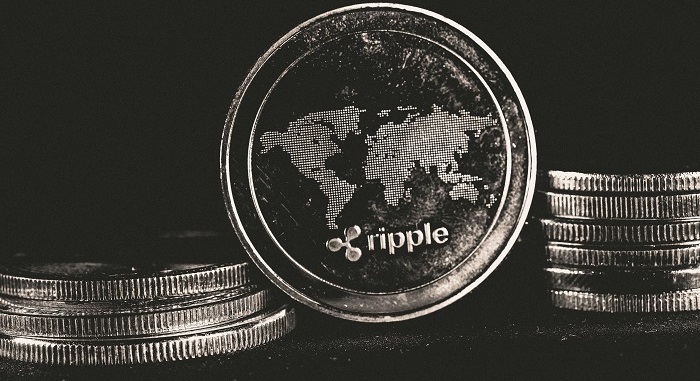Ripple Labs created the XRP Ledger blockchain in 2012, with XRP serving as the platform’s native currency. The purpose was to offer a simple, reliable, and cheap way of conducting cross-border transactions for businesses and individuals. Over a decade later, XRP maintains its place among the most reputable cryptocurrencies in the crypto world.
As the industry evolves, new investment opportunities keep appearing. You can still buy Ripple in a few clicks online, but some refrain from even entering the crypto market. The solution to make XRP accessible to those investors is to offer ETFs.
Is that a realistic move for Ripple in the foreseeable future? Here’s what the experts have to say regarding XRP ETFs and them becoming a reality soon!
What Is Crypto ETF?
An exchange-traded fund is a pooled investment security you can trade as a stock on an exchange. ETFs are linked to an underlying index and aim to mimic or outperform it. Crypto ETFs are those that use cryptocurrencies as the underlying index. They track the price of the selected asset and try to mimic its performance.
The difference is the trading doesn’t occur on the crypto but on the fiat stock exchange. That’s critical because it allows investors to invest in cryptocurrencies without entering the crypto world. It eliminates the need to do business in a market that some consider unregulated, and it’s also unnecessary to create a crypto wallet. Some find that technicality a hassle they don’t want to deal with.
Another important benefit of crypto ETFs is that they have a low investment threshold. For example, a single BTC might be worth over $60K. However, if you go with a Bitcoin ETF, you can invest in BTC at a considerably lower sum. That makes it attractive to expand your portfolio beyond the traditional financing options.
As you can assume, an XRP ETF is an exchange-traded fund that would use XRP as the underlying index. It would be available as an asset on traditional stock exchanges but aims to mimic the performance of the XRP coin in the crypto market. For comparison purposes, XRP has been anywhere from $0.40 to $0.80 in the last 12 months.
We underline that XRP ETFs are still not available. There was no official announcement, so it’s hard to believe they will be tradeable during 2024. Until that time comes, we suggest learning what you need to know about XRP and its use cases. The digital currency is ideal for micropayments, remittances, and other cross-border transactions. It offers decentralized transfers, which secures a higher privacy level than conventional financing.
Challenges in Approving ETFs for XRP
Cryptocurrencies are facing different kinds of regulatory and other challenges. If we focus on XRP, these are the main problems that could be in the way of approving ETFs:
- Regulatory uncertainty. Ripple Labs and the Securities and Exchange Commission have been in a legal battle for years. The latest reports indicate that the SEC is asking for Ripple to pay a $2 billion penalty. These legal issues are the primary challenge that XRP needs to resolve before becoming classified as a security.
- Environmental concerns. Ethereum and Bitcoin have higher carbon footprints than XRP. Despite that, authorities keep making the regulations regarding energy efficiency and environmental impact more demanding.
- Sufficient trading volume and market capitalization. Trading volume shows that the currency market is active and there’s sufficient demand. Market capitalization is an excellent indicator of project value.
- Generating enough interest from traders. Trading interest goes hand in hand with the two indicators mentioned above. Strategic partnerships and tech innovations generate a buzz and keep a currency intriguing for potential investors.
What Will Be with XRP After ETF Approval

The unanimous agreement is that ETF approval will have a positive influence on the cryptocurrency in question, especially in the long run. Here’s what might happen with XRP if it gets the ETF permission:
- Increased institutional investment. The secret lies in regulatory compliance. ETFs meet all relevant standards for conventional trading, making them attractive to institutional investors. These often come with significant investments, which could generate a positive overall effect on XRP.
- Price appreciation. More interest and higher investments will lead to an XRP price jump. It’s worth noting this might not happen immediately. But looking in the long run, such as in a few months or years, XRP value will benefit from ETF approval.
- Boost in Ripple’s ecosystem. The estimation is that over $2 billion flowed into Bitcoin shortly after BTC ETFs became available. The additional funding can be beneficial for XRP and Ripple Labs. That should have a positive influence on the entire ecosystem, making it improved and even more reliable.
- Validating XRP’s legitimacy. Approving ETFs will boost the currency’s reputation. That confirms XRP’s legitimacy in the mainstream financial structure. It attracts more users and not only investors, having a positive influence and making XRP more popular.
Chances of XRP ETF Approval
Bitcoin and Ethereum are the only cryptocurrencies that received ETF permissions so far. These two cryptocurrencies also lead the crypto rankings in market capitalization.
By following that logic, Binance Coin and Solana rank higher than XRP. Considering that Solana is a similar project to Ethereum, many experts consider it the strongest candidate for the next crypto to get ETFs.
Another thing that causes trouble for XRP is the SEC lawsuit. The case is close to finishing, and many expect everything will be clear by the end of the year. Until that happens, it’s hard to imagine that XRP ETFs have a strong chance of approval. That means we could expect them as early as 2025.
From an investor’s perspective, XRP might be an attractive choice at this point. Even the news announcing XRP ETFs might cause price appreciation, making this crypto a smart long-term pick. On the other hand, it’s important to follow the outcome of the lawsuit since it could greatly determine XRP’s future success.




